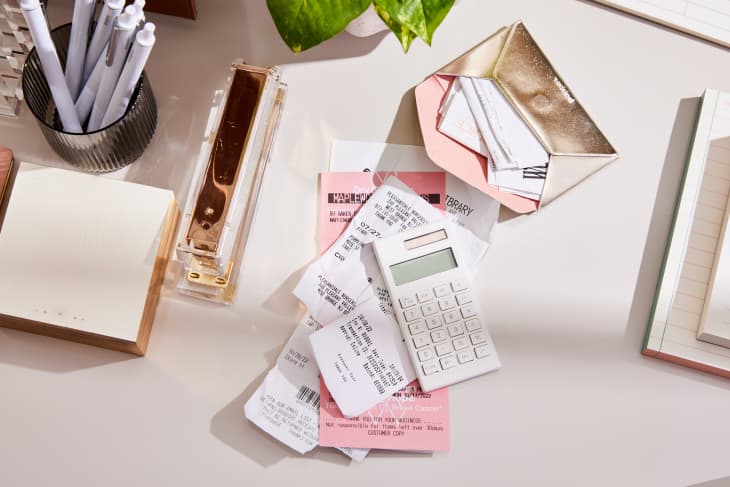The Best Way to Organize Your Tax Documents, According to Experts

Tax season is upon us, which means it’s almost time to file your tax return — a process that can take a lot of time and mental energy. Even if you enlist an expert to help prepare your taxes, you’re still responsible for all the forms involved.
You may keep physical records, or you may opt to store everything electronically to cut down on clutter. Either way, by this time next year, you’ll probably wish you had taken the extra step to organize all of these important documents.
The question is: What’s the best way to keep all files neat and easy to navigate? Below, experts sound off on how to best organize your tax forms.
The Best Way to Organize Tax Documents
- Get into the habit of collecting and organizing your documents year-round.
- If you store digitally, use a cloud-based service and back up your files.
- Shred or recycle after three years.
Get into a routine, and be consistent.
Filing your annual income tax return is probably the most important financial transaction you’ll do every year, says Mark Steber, chief tax information officer at Jackson Hewitt. For that reason, it’s important to take the details seriously. “But that doesn’t start only on the day you file your return,” says Steber. “It should be a year-round practice.”
Get into a routine of saving and organizing your documents throughout the year instead of waiting until the beginning of the year you file to get things organized. (Something to consider as you start collecting things for next year’s taxes!) And whatever organization system you start — whether you scan documents and organize them electronically or keep all the paper versions in envelopes or boxes — be sure it’s a routine you can stick with.
Break everything down into categories.
Steger’s go-to method is organizing tax documents in four separate categories: income-related documents (such as W-2s from work or 1099s for contracts), receipts for potential write-offs (including medical expenses, mortgage interest and property taxes, and charitable donations), last year’s tax returns and dependent information (including life-changing events like having a baby), and lastly, anything that doesn’t fall neatly into the others (like 401K distribution statements or items you have questions about.)
“These categories are helpful when you are talking with your tax pro about what credits and deductions you might be eligible for as well as anything related to your income,” Steger says.
Create a tax “drop zone.”
While Steber recommends spending an hour or so every month getting your tax files in order, these items need somewhere to go until you reach that point. Michelle Urban, founder of The Organized House, recommends designating a specific drop zone — perhaps a basket, drawer, or file folder — for storing your taxes until you actually get to organize them.
Not only will a predetermined system keep your home from being cluttered in the meantime, but it’ll also make your actual organizing process less frustrating and time-consuming.
Follow best practices for digital organization.
Keeping files on your computer prevents unnecessary paper waste and, of course, keeps clutter out of your home. But if you plan to organize your tax documents digitally, be sure to follow a few best practices to keep them safe and orderly.
Shannon Krause, founder of Tidy Nest, recommends using a cloud-based storage service like Google Drive or Dropbox so you don’t need your computer to access your files. “Plus, it makes it easy to share with your accountant, or if multiple people are contributing to the files,” she says.
Just as importantly, backing up your files ensures you won’t lose them in the event your computer crashes. Just be sure to organize each file specifically and clearly like you would in a paper folder. Krause recommends creating subfolders for different kinds of tax items within a main folder labeled by tax year (and following a consistent naming convention).
Know when you can get rid of documents.
In general, it’s a good practice to hold onto old tax documents — but you don’t need to keep them on file indefinitely. Steger recommends taxpayers keep these items on hand for three years. After that point, you can shred these or move them to your computer recycling bin.